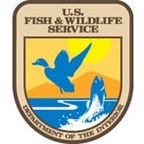Waterfowl Banding in North Dakota
By Hunter Bertrand
This summer I was very fortunate to join a waterfowl banding crew for the U.S. Fish and Wildlife Service (Service). Our three-man crew included crew leader Stephen Chandler, William Moody, and myself. Our first several days consisted of scouting, site prepping, and baiting sites south of Devil’s Lake, North Dakota.
Our trapping methods included rocket netting and swim-in traps. Local Service and U.S. Geological Survey colleagues had prepared the rocket net sites and pre-baited them prior to our arrival. Rocket netting was the most successful technique so far and was the primary source of our captures. In fact, with one week left during our time, we put out just over 700 new bands! The overwhelming majority of these birds were wood ducks, followed by mallards and blue-winged teal. We also captured northern pintails and green-winged teal. Nearly all of the wood ducks and mallards were after hatch-year adults, however we caught more juvenile blue-winged teal than adults.
I gained a wealth of knowledge over the month I spent capturing birds. I had no real experience with capturing and banding birds beforehand, and I had never even really seen ducks in summer plumage. Now, after some coaching from Mr. Chandler, I can identify species, age, and sex in multiple species using wing plumage and other techniques. This has been the experience of a lifetime, and something I will fondly remember.
